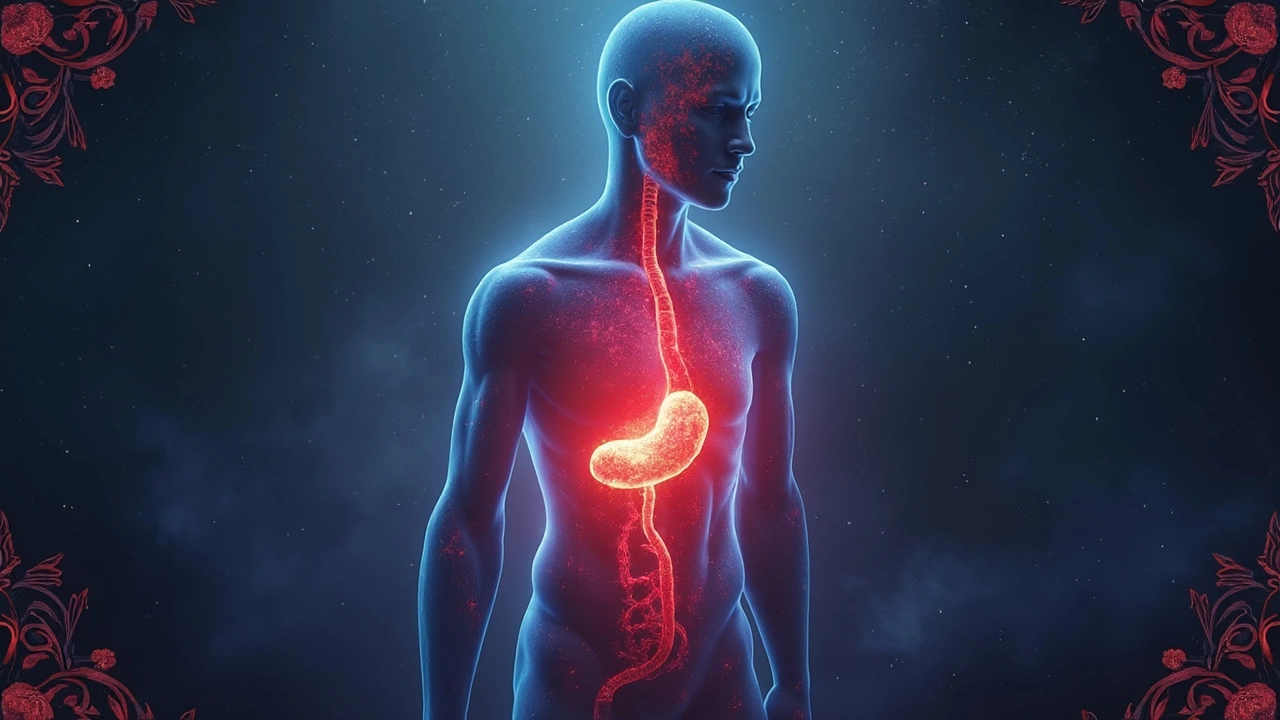When we talk about cancer, we often focus on survival rates, treatments, and what the future holds. But let's face another reality: the pain. Some cancers hurt more than others, and understanding why that is can actually empower those affected and their families.
Let's get into the nitty-gritty. Bone cancer is a fierce adversary when it comes to pain. When the cancer cells invade the bones, they disrupt the balance of bone formation and breakdown. It's like having termites in a wooden house—things just aren't stable anymore. This can lead to intense pain and make even simple movements torture.
Now, let's turn to pancreatic cancer. Often tagged as a silent killer because of its vague symptoms early on, by the time it's detected, it tends to be quite advanced. The pain here? Not so silent. It often radiates from the abdomen to the back, gnawing away at comfort and peace. This is because the pancreas sits deep in the belly near many nerves.
- Understanding Cancer Pain
- Bone Cancer: A Tough Opponent
- The Silent Agony of Pancreatic Cancer
- Managing Pain: Can We Make It Easier?
- Staying Strong: Support and Hope
Understanding Cancer Pain
Cancer pain can feel like a bewildering enemy. It's not just about having a bad day; it's about understanding that the pain varies significantly across different types of cancer and stages. So, what makes some cancers especially notorious for being painful?
First off, not every cancer causes pain right away. Often, it's the tumor's location and size that decide how much it hurts. For example, tumors that press against bones or nerves are likely to send sharp pain signals. Metastasis, which is when cancer spreads to other parts of the body, can also up the pain game, particularly when it hits places like the bones or liver.
Moreover, the type of tissue the cancer affects plays a big role. In the case of bone cancer, the pain arises from the cancer disrupting the integrity of the bone structure, leading to fractures or micro-fractures even when doing basic activities.
On the flip side, cancers in soft tissues might not hurt until they grow large enough to press against nerves, organs, or other tissues. This is often the case with pancreatic cancer, which can stay under the radar until it's fairly advanced, and by then, causes significant pain due to its deep location in the abdomen.
Here's a reality check: pain is subjective, meaning it varies wildly from person to person. What feels like a minor ache to one might be excruciating to another. This is why cancer treatment often involves pain management strategies as well.
Understanding the dynamics behind cancer pain helps in planning better care and making informed decisions about treatment paths. The focus isn't just on fighting the cancer cells but also on keeping life as comfortable as possible.
Bone Cancer: A Tough Opponent
Dealing with bone cancer isn't just about battling the disease, it's also about managing the intense pain that comes with it. Unlike other cancers that may only cause pain in later stages, bone cancer hits hard and fast because the bones are directly affected. This pain is like a constant companion, sneaking up on you when you least expect it.
Bone cancer usually starts in the cells that form bone, and you've probably heard it as osteosarcoma if it happens in teenagers and young adults. There’s also Ewing sarcoma and chondrosarcoma, which can throw a punch too. But why the pain, you ask? Well, when cancer cells invade the bone, they mess up the structural integrity. Imagine what happens when a solid structure starts crumbling from within. Not fun, right?
The pain can be sharp and suddenly come and go, or it might stick around like an unwanted house guest. A report from the National Cancer Institute explains,
"The disruption of normal bone remodeling leads to bone loss and fragility, contributing to the severe pain experienced by bone cancer patients."The pain often increases with activity, making everyday activities feel like climbing a mountain.
Here’s the thing: understanding the kind of pain you're dealing with can really help you manage it better. Doctors use various treatments, from medications to physical therapy, to make life easier. There's even a type of medicine out there called bisphosphonates, which help protect the bones from further damage. It’s about taking a multifaceted approach to keep the pain in check.
No two experiences with bone cancer pain are exactly alike, and finding the right balance of treatments can sometimes feel like a science experiment. But with the right medical advice, it's possible to maintain quality of life.
| Type | Common Age Group | Frequency (per year) |
|---|---|---|
| Osteosarcoma | 10-30 years | 800-900 cases |
| Ewing's Sarcoma | 10-20 years | 200 cases |
| Chondrosarcoma | Over 40 years | 700 cases |

The Silent Agony of Pancreatic Cancer
Pancreatic cancer is like that sneaky ninja—hard to detect until it's almost too late, and by then, it’s packing a punch. There’s a reason why it’s tagged as a super painful type: its ability to spread quickly and its position in the body. Nestled deep in the abdomen, the pancreas is surrounded by a rich network of nerves. When these get irritated, voila—a world of hurt.
One of the tricky parts is how the pancreatic cancer pain begins. It often starts vague, a slight discomfort in the belly that slowly escalates into a more insistent, sometimes debilitating, gnawing pain. What’s more frustrating? This pain often radiates to the back. So people find sitting or lying down can become a wrestling match for comfort.
The challenge also lies in symptoms that mix with more common gastrointestinal issues. You might think it’s acidity or some bloating at first, which is why it’s easy for pancreatic cancer to go unnoticed. It's not until things get really out of hand that people start connecting dots to something more sinister.
But here’s a bit of hope: managing pancreatic cancer pain is getting better thanks to new treatments and pain management techniques. Doctors often combine a mix of medications, nerve blocks, and sometimes even procedures to remove pain-causing factors. They aim to keep you comfortable, so you can focus more on the positive moments amidst the battle.
Despite its reputation, understanding the pathways of painful cancers like pancreatic can lead to better personalized care. So, while it’s not a journey anyone would want, the right knowledge can make a big difference in how one manages the road ahead.
Managing Pain: Can We Make It Easier?
Dealing with pain from cancer isn't just about popping a pill and hoping for the best. There are many strategies, and it often takes a combination to bring relief. Let's break it down and see what can truly help in easing that burden.
First off, medications are often the go-to. Opioids like morphine have been the backbone for managing severe cancer pain. They're powerful, but they need to be used carefully to avoid dependency issues. On top of these, non-opioid pain relievers like acetaminophen might be used for mild to moderate pain.
Then there are nerve blocks. For those lightning-bolt pains shooting from nerves, a nerve block might be the answer. Doctors inject a local anesthetic near the nerves causing trouble, blocking pain signals right at the source. This can be a game-changer for many.
But pain isn't always just physical. It sits in the mind and soul too. That's where therapies come in—physical therapy, occupational therapy, and even psychological support can hugely impact someone's comfort level. They can help maneuver through daily activities while keeping spirits up.
- Complementary therapies: Things like acupuncture, yoga, and meditation can add another layer of relief. They aren't replacements for medical treatments, but they can definitely add to the toolbox.
- Ice and heat packs: Simple, but effective—these can help manage localized pain. Heat can relax tight muscles, while ice can numb areas that are swollen or inflamed.
And, why not look at some promising tech? Advances in technology bring new solutions to the table, like TENS (Transcutaneous Electrical Nerve Stimulation). It's a small device that uses low-voltage electrical currents to interfere with pain signals before they reach the brain.
| Method | Percentage of Patients Benefiting |
|---|---|
| Opioid Medication | 70% |
| Complementary Therapies | 45% |
| Nerve Blocks | 60% |
The pain management journey is unique for everyone, but knowing there's a wide array of methods out there is comforting. Combining different treatments often provides the best results. Working closely with healthcare professionals ensures that what you're doing works and makes life a bit easier despite the challenges.

Staying Strong: Support and Hope
Facing something like cancer, particularly painful ones like bone cancer or pancreatic cancer, can feel like walking up a steep hill every single day. But hey, you're not alone in this!
The support network around you, whether it's family, friends, or healthcare professionals, plays a massive role. Having people who truly get what you're going through, or are at least willing to try, makes all the difference. Resources like cancer support groups, both online and offline, can be especially helpful. They offer a safe space to share experiences or just vent without judgment.
Don't underestimate the power of professional help, too. Counselors who specialize in working with cancer patients can provide coping strategies that help manage mental health alongside physical pain. Many times, these experts guide you in ways to communicate your needs to loved ones—let's be real, not everyone knows how to help when times get tough.
Also, staying informed about cancer treatment options can provide a sense of control in a situation that often feels anything but. Knowing what's available, asking questions, and perhaps exploring clinical trials could open doors to new possibilities.
- Strengthening your body and mind through gentle exercises or activities like yoga and meditation has shown benefits in improving mood and sometimes even alleviating pain.
- Nutrition is crucial. Eating right might not cure cancer, but it can certainly bolster your energy levels and resilience.
- Don't shy away from leaning on technology; apps that track symptoms or remind you about medication can take a small load off your mind.
Even in dark times, there are glimmers of hope, making the journey a little less daunting, and you—yes, you!—a whole lot stronger than you might think.



